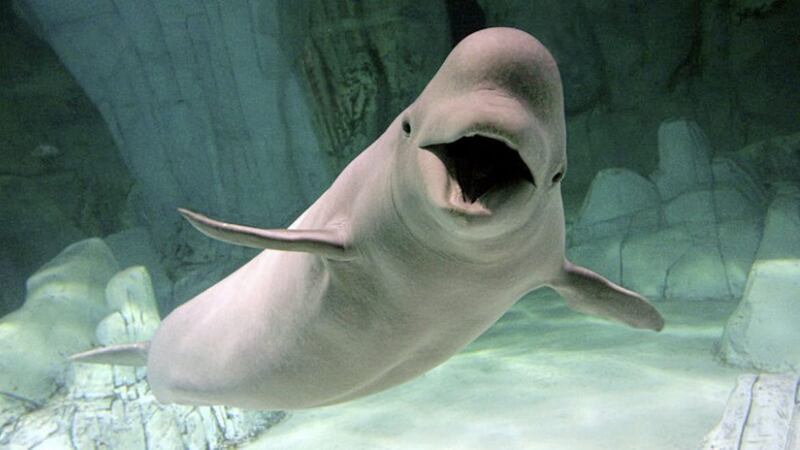THE fixed grimace on its face, the erect fin that slices through the water, the flick of its tail that gives it an extra kick of speed: unblinking, the shark cruises past, less than two metres from my head. In its wake comes another – and then three more.
It is unnerving, even though there is a thick tunnel of glass between me and these creatures that, thanks to cinema, have become one of the archetypal monsters of our times.
As I walk through the long underwater tube, spotted eagle rays and manta rays glide like elegant underwater birds, graceful and calm as they brush past the sharks.
Oceanografic in Valencia, Spain’s third largest city, is Europe’s biggest marine park and boasts more than 500 different species in themed areas. From the warm waters of the Red Sea, a stroll to the icy seas of the Arctic to see one of the most endearing inhabitants – a baby Beluga whale called Kylu swimming with its parents Yulka and Kairo.
Do whales do facial expressions? I don’t know, but you would almost think Kylu was smiling as its human carers tap on the glass and call to it.
I had to stop myself from singing "goo goo g'joob, goo goo g'joob" when I came to the neighbouring enclosure where it was feeding time for the walruses and the Beatles song popped into my head.
Oceanografic’s aim is to nurture an appreciation of the wildlife we share this planet with and highlight the challenges that other species face because of human behaviour.
But it is also a research centre and its staff have been carrying out vital work with penguins stricken with avian malaria. For the visitor to Oceanografic, there is a feeling of connectedness just seeing these creatures up close, swimming and hopping out of the water onto snowy shores to the nests where their eggs are being hatched.
That this species which lives in the freezing temperatures of the Antarctic should be threatened by a disease of the tropics tells us much about human meddling with nature – introducing malaria carriers such as dogs into areas where they are non-native.
Even more alarming perhaps is the fact that the malarial parasites which would not normally survive in the extreme cold are able to do so because of rising temperatures at the southern ice caps.
At the opposite end of Valencia’s former river Turia – which was diverted decades ago to avoid flooding and is now 10kms of winding parks, sports pitches, walks and cycle paths – is the city’s Bioparc.
Again, the emphasis is on interaction and connection as the visitor wanders through the landscapes of Madagascar, Equatorial Africa and the Savannah, passing alarmingly close to the indigenous wildlife of these regions.
A lion perches on a rocky outcrop, licking her paws and cleaning her ears like an oversized domestic cat, leopards pace almost within pouncing distance and a gorilla feeds her baby.
The Bioparc has been designed to create a sense of immersion, with overhanging rocks and water features used to keep man and beast apart, but allowing a closeness that was never a feature of an old fashioned zoo.
Sustainability is a major part of the park’s ethos, with 95 per cent of the water recycled and solar panels used to heat water for the equatorial river dwellers who live there.
Conservation and education go hand in hand, with the remit to help raise awareness of the species which live in the Bioparc, many of which are included in European conservation and breeding programmes.
:: Tony Bailie stayed in Valencia as a guest at Hotel SH Ingles. Inglesboutique.com/en







